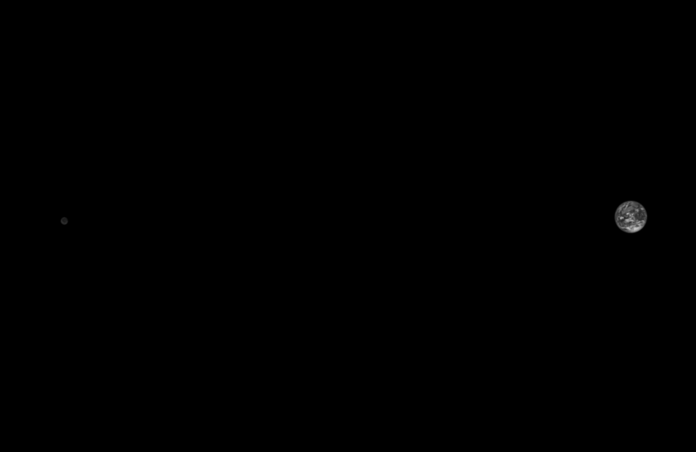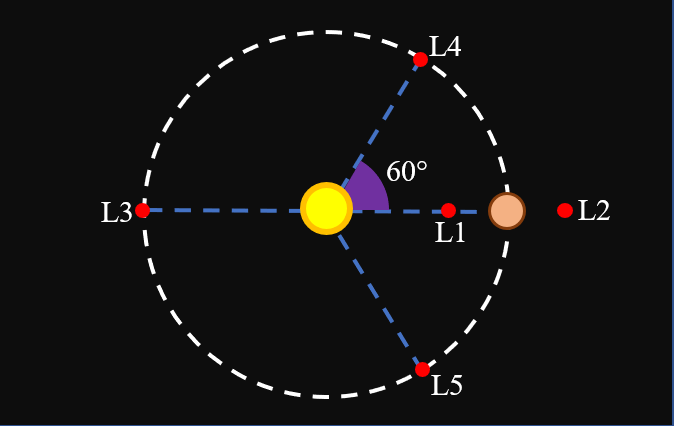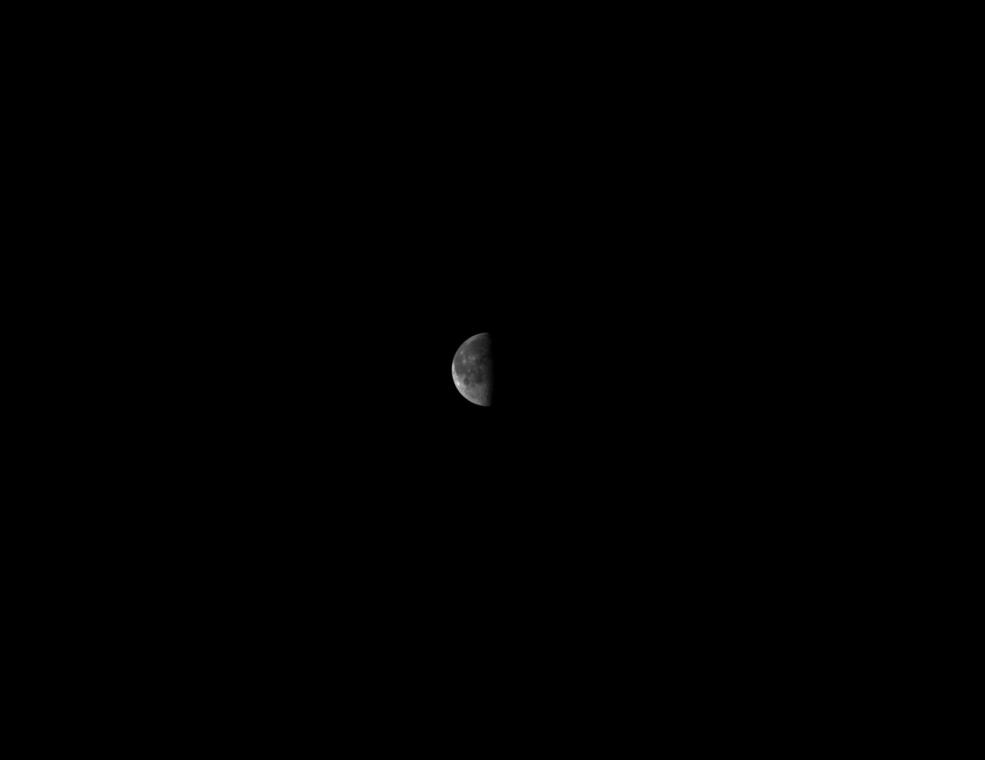Lucy Spacecraft Captures Image of the Moon During First Gravity Assist

On the 16th of October, 2021, NASA launched the Lucy Spacecraft for its twelve-year mission to explore a total of 8 targets, one within the asteroid belt, and 7 Trojan asteroids. This would mark the largest number of asteroid targets a probe has ever investigated. Since then, the probe has been preparing for the gravity boost required to traverse the distance towards Jupiter and to meet its targets.
Lucy will be the first ever craft to fly by the Trojan asteroids, which are a cluster of minor bodies that orbit within the same orbital as Jupiter. In spite of this, these have likely remained within its path since the early stages of our solar system. These orbit with the same period as the gas giant, and so cannot be cleared from its orbital path. This is because the asteroids are currently oscillating around the L4 and L5 Lagrange points for Jupiter and the Sun.

The five Lagrange points due to two bodies.
These are two of the five points that exist as a result of two massive bodies. At the Lagrange points, a third body of neglegible gravitational influence would have a no net forces acting on it. In a rotating frame, these balance three types of forces. The gravitational forces due to both bodies, the centrifugal force and the Coriolis force. Three are located in line with the two bodies, while the other two lie in the orbit of the smaller body, at 60°.
During the formation of the solar system, the paths of all planets were filled with protoplanetary material, including asteroids. As the planets began to orbit in their set paths, they cleared these out, which is why, currently, these are all free. However, the gravitational force of Jupiter is so intense that the gravitational saddle points at its L4 and L5 Lagrange points are pronounced enough that any deviation from them result in a strong enough correction by the coriolis force to maintain their position. As such, asteroids at these locations were consistently dragged along by gravitational forces. This coriolis correction is not enough to keep asteroids at L1 - L3 in stable orbit, however.
Since Jupiter would anticlockwise, in this diagram, the asteroids at L4 are the leading group and the asteroids at L5 are the trailing group. As mentioned, the Lucy spacecraft will target 7 Trojan asteroids, 5 within the leading group, expected to be occur 2027-2028, and 2 within the trailing group, expected to occur 2033.
During an instrument calibration process in preparation of the first of three gravity boosts, on the 13th of October 2022, Lucy took the image used here as the cover. This image captures both the Earth and moon at a distance of 1.4 million km.
Additionally, on the 16th of October 2022, Lucy underwent the first gravity boost, during which it took and image of the Moon at a distance of 240,000 km, in between the Earth and moon.

Image of the Moon during the fourth quarter, taken during Lucy’s gravity assist.
--
Cover Image: NASA/Goddard/SwRI
